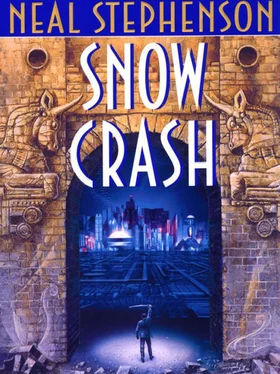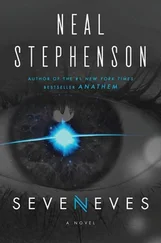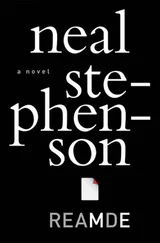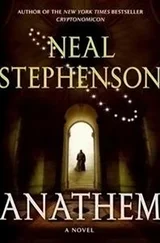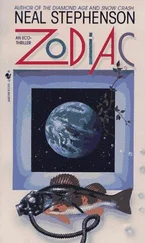Neal Stephenson - Snow Crash
Здесь есть возможность читать онлайн «Neal Stephenson - Snow Crash» весь текст электронной книги совершенно бесплатно (целиком полную версию без сокращений). В некоторых случаях можно слушать аудио, скачать через торрент в формате fb2 и присутствует краткое содержание. Жанр: Киберпанк, на английском языке. Описание произведения, (предисловие) а так же отзывы посетителей доступны на портале библиотеки ЛибКат.
- Название:Snow Crash
- Автор:
- Жанр:
- Год:неизвестен
- ISBN:нет данных
- Рейтинг книги:5 / 5. Голосов: 1
-
Избранное:Добавить в избранное
- Отзывы:
-
Ваша оценка:
- 100
- 1
- 2
- 3
- 4
- 5
Snow Crash: краткое содержание, описание и аннотация
Предлагаем к чтению аннотацию, описание, краткое содержание или предисловие (зависит от того, что написал сам автор книги «Snow Crash»). Если вы не нашли необходимую информацию о книге — напишите в комментариях, мы постараемся отыскать её.
Snow Crash — читать онлайн бесплатно полную книгу (весь текст) целиком
Ниже представлен текст книги, разбитый по страницам. Система сохранения места последней прочитанной страницы, позволяет с удобством читать онлайн бесплатно книгу «Snow Crash», без необходимости каждый раз заново искать на чём Вы остановились. Поставьте закладку, и сможете в любой момент перейти на страницу, на которой закончили чтение.
Интервал:
Закладка:
To the right of the slab is a wooden pole with branches on top, sort of a stylized tree. To the left of the slab is an eight-foot-high obelisk, also covered with cuneiform, with a bas-relief figure chiseled into the top.
The room is filled. with a three-dimensional constellation of hypercards, hanging weightlessly in the air. It looks like a high-speed photograph of a blizzard in progress. In some places, the hypercards are placed in precise geometric patterns, like atoms in a crystal. In other places, whole stacks of them are clumped together. Drifts of them have accumulated in the corners, as though Lagos tossed them away when he was finished. Hiro finds that his avatar can walk right through the hypercards without disturbing the arrangement. It is, in fact, the three-dimensional counterpart of a messy desktop, all the trash still remaining wherever Lagos left it. The cloud of hypercards extends to every corner of the 50-by-50-foot space, and from floor level all the way up to about eight feet, which is about as high as Lagos's avatar could reach.
"How many hypercards in here?"
"Ten thousand, four hundred and sixty-three," the Librarian says.
"I don't really have time to go through them," Hiro says. "Can you give me some idea of what Lagos was working on here?"
"Well, I can read back the names of all the cards if you'd like. Lagos grouped them into four broad categories: Biblical studies, Sumerian studies, neurolinguistic studies, and intel gathered on L. Bob Rife."
"Without going into that kind of detail - what did Lagos have on his mind? What was he getting at?"
"What do I look like, a psychologist?" the Librarian says. "I can't answer those kinds of questions."
"Let me try it again. How does this stuff connect, if at all, to the subject of viruses?"
"The connections are elaborate. Summarizing them would require both creativity and discretion. As a mechanical entity, I have neither."
"How old is this stuff?" Hiro says, gesturing to the three artifacts.
"The clay envelope is Sumerian. It is from the third millennium B.C. It was dug up from the city of Eridu in southern Iraq. The black stele or obelisk is the Code of Hammurabi, which dates from about 1750 B.C. The treelike structure is a Yahwistic cult totem from Palestine. It's called an asherah. It's from about 900 B.C."
"Did you call that slab an envelope?"
"Yes. It has a smaller clay slab wrapped up inside of it. This was how the Sumerians made tamper-proof documents."
"All these things are in a museum somewhere, I take it?"
"The asherah and the Code of Hammurabi are in museums. The clay envelope is in the personal collection of L. Bob Rife."
"L. Bob Rife is obviously interested in this stuff."
"Rife Bible College, which he founded, has the richest archaeology department in the world. They have been conducting a dig in Eridu, which was the cult center of a Sumerian god named Enki."
"How are these things related to each other?"
The Librarian raises his eyebrows. "I'm sorry?"
"Well, let's try process of elimination. Do you know why Lagos found Sumerian writings interesting as opposed to, say, Greek or Egyptian?"
"Egypt was a civilization of stone. They made their art and architecture of stone, so it lasts forever. But you can't write on stone. So they invented papyrus and wrote on that. But papyrus is perishable. So even though their art and architecture have survived, their written records - their data - have largely disappeared."
"What about all those hieroglyphic inscriptions?"
"Bumper stickers, Lagos called them. Corrupt political speech. They had an unfortunate tendency to write inscriptions praising their own military victories before the battles had actually taken place."
"And Sumer is different?"
"Sumer was a civilization of clay. They made their buildings of it and wrote on it, too. Their statues were of gypsum, which dissolves in water. So the buildings and statues have since fallen apart under the elements. But the clay tablets were either baked or else buried in jars. So all the data of the Sumerians have survived. Egypt left a legacy of art and architecture; Sumer's legacy is its megabytes."
"How many megabytes?"
"As many as archaeologists bother to dig up. The Sumerians wrote on everything. When they built a building, they would write in cuneiform on every brick. When the buildings fell down, these bricks would remain, scattered across the desert. In the Koran, the angels who are sent to destroy Sodom and Gomorrah say, 'We are sent forth to a wicked nation, so that we may bring down on them a shower of clay-stones marked by your Lord for the destruction of the sinful.' Lagos found this interesting - this promiscuous dispersal of information, written on a medium that lasts forever. He spoke of pollen blowing in the wind - I gather that this was some kind of analogy."
"It was. Tell me - has the inscription on this clay envelope been translated?"
"Yes. It is a warning. It says, 'This envelope contains the nam-shub of Enki.'"
"I know what a nam-shub is. What is the nam-shub of Enki?"
The Librarian stares off into the distance and clears his throat dramatically.
"Once upon a time, there was no snake, there was no scorpion,
There was no hyena, there was no lion,
There was no wild dog, no wolf,
There was no fear, no terror,
Man had no rival.
In those days, the land Shubur-Hamazi,
Harmony-tongued Sumer, the great land of the me of princeship,
Uri, the land having all that is appropriate,
The land Martu, resting in security,
The whole universe, the people well cared for,
To Enlil in one tongue gave speech.
Then the lord defiant, the prince defiant, the king defiant,
Enki, the lord of abundance, whose commands are trustworthy,
The lord of wisdom, who scans the land,
The leader of the gods,
The lord of Eridu, endowed with wisdom,
Changed the speech in their mouths, put contention into it,
Into the speech of man that had been one.
That is Kramer's translation."
"That's a story," Hiro says. "I thought a nam-shub was an incantation."
"The nam-shub of Enki is both a story and an incantation," the Librarian says. "A self-fulfilling fiction. Lagos believed that in its original form, which this translation only hints at, it actually did what it describes."
"You mean, changed the speech in men's mouths."
"Yes," the Librarian says.
"This is a Babel story, isn't it?" Hiro says. "Everyone was speaking the same language, and then Enki changed their speech so that they could no longer understand each other. This must be the basis for the Tower of Babel stuff in the Bible."
"This room contains a number of cards tracing that connection," the Librarian says.
"You mentioned before that at one point, everyone spoke Sumerian. Then, nobody did. It just vanished, like the dinosaurs. And there's no genocide to explain how that happened. Which is consistent with the Tower of Babel story, and the nam-shub of Enki. Did Lagos think that Babel really happened?"
"He was sure of it. He was quite concerned about the vast number of human languages. He felt there were simply too many of them."
"How many?"
"Tens of thousands. In many parts of the world, you will find people of the same ethnic group, living a few miles apart in similar valleys under similar conditions, speaking languages that have absolutely nothing in common with each other. This sort of thing is not an oddity - it is ubiquitous. Many linguists have tried to understand Babel, the question of why human language tends to fragment, rather than converging on a common tongue."
"Has anyone come up with an answer yet?"
"The question is difficult and profound," the Librarian says. "Lagos had a theory."
Читать дальшеИнтервал:
Закладка:
Похожие книги на «Snow Crash»
Представляем Вашему вниманию похожие книги на «Snow Crash» списком для выбора. Мы отобрали схожую по названию и смыслу литературу в надежде предоставить читателям больше вариантов отыскать новые, интересные, ещё непрочитанные произведения.
Обсуждение, отзывы о книге «Snow Crash» и просто собственные мнения читателей. Оставьте ваши комментарии, напишите, что Вы думаете о произведении, его смысле или главных героях. Укажите что конкретно понравилось, а что нет, и почему Вы так считаете.
